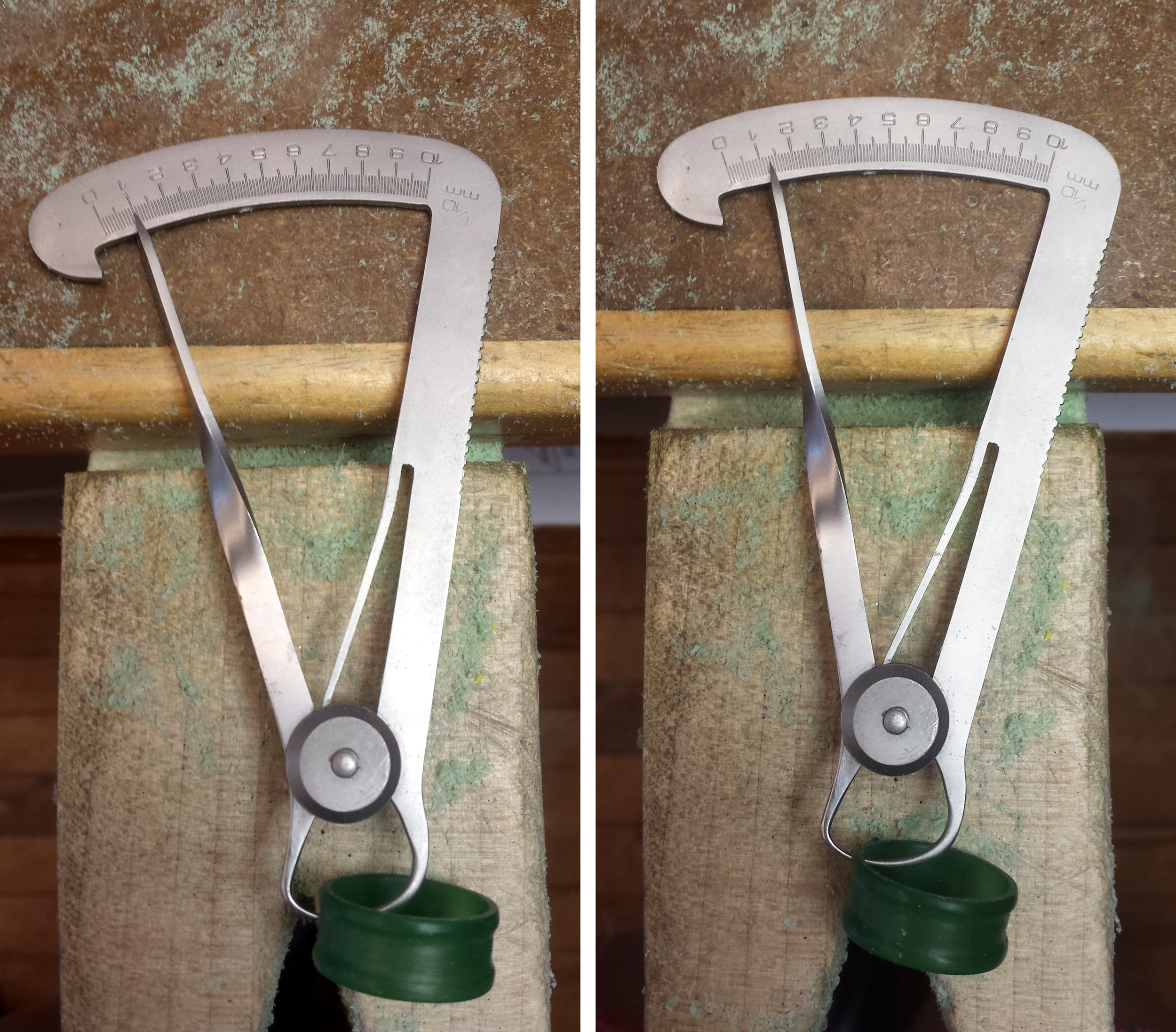Some days at the studio, I come across cool ideas about my new work. Some days, however, I feel totally blank and struggle to come up with anything new. In those days, I try to make some fun and fast projects so that I can at least keep my hands busy. I decided to carve some rings out of hard carving wax. I’d like to share the carving process with some pictures.
The ring wax
I used a block of ring wax that I had and cut off just the right amount of it by using a band saw. I personally prefer the purple wax to the green because it seems to be more flexible and springy, which means it tends not to break or crack easily. When the wax model is thin and complicated, it becomes very fragile, which means it is easy to smash the model with your own fingers. There are ways to fix the damages like that, but still it can be a frustrating thing to have happen, especially after hours and hours of carving. Luckily, nothing bad happened this time to my work!
The beginning of the carving process
The original ring hole comes really small and it barely fits on my pinky finger. Since I do not have a ring wax sizer, I used the rounded side of the wax file to expand the size of the hole. It was tricky to carve a perfect(ish) circle, but it came out okay. Then, I cut out some big chunks of excess materials using a jeweler’s saw and started carving with the wax file. The wax file is courser than a jeweler’s file which allows the wax filings to not get stuck in between the teeth of the file.
First thickness check. It was around 2mm, which is still too thick for me.
30-40 minutes later, the model started to look like the ring I had originally planned. When it gets close to the final design, I always check the thickness of the wax model with the thickness gauge. I like thinner and lighter jewelry. The wax for lost wax casting is so much lighter than metal, the cast object often turns out to be way heavier and chunkier than you expected. There is a way to get a rough estimated weight of your final object by multiplying by 10 (for sterling silver) with the weight of the wax model. If the model is 0.6g, the final silver product will be 6g. However, when you carve too much and make the wall too thin, I would say thinner than 0.4mm, the risk of failing the casting process becomes higher. I usually tend to carve things less than a 1mm, probably 0.7-0.8mm thick and it has worked out perfectly so far. However, please keep that in mind that these are just my personal preferences. Your results may vary.
Left : measuring thickness on the middle part / Right : measuring thickness on the rims
In the middle of carving, I changed my design from a simple cylinder to an empty spool shape. I checked the thickness again. The rims were about 1.3mm and the concaved middle part was about 1mm thick. Since I was planning to add some textures on the surface, I decided not to make it any thinner.
Carving the shape is done, but the surface is still noticeably rough.
After I finished carving the shape, the surface was still very rough and bumpy. I used 320 grit sandpaper to even out the surface. Here is my funny tip about smoothing out the surface - scrub towel! Unfortunately, I have never seen this kind of scrub towel in the States, so it might be hard to get your hands on one, but it really works well for this task. I learned this trick from the college I went to in Seoul, South Korea.
image from http://rudder999.com
The towel is a common bath towel in South Korea, sort of like a loofah. It is a loosely woven synthetic fabric. Little scratches that remain on the surface after using rough grit sandpaper can be perfectly smoothed out by rubbing the surface with the towel
The final wax model under the light
I added some texture on the middle part of the ring using my wax carving tools. I've been using all different kinds of textures on the surface of wax models, and this texture is one of my favorites. It looks like some sort of fur and broken lines. When I sketch or paint something, that pattern shows up a lot as well. It appears to be floating on the surface, adding some fun movements to the shape.
Two rings and one earring part I carved today
I spent a few hours to carve the rings and one possible earring part. I carved it for fun without any specific plan, so we will see how I can add that little baby part to make something cool. Next time I will make a post Part 2 about casting process. I can't wait to see them in shiny sterling silver!







